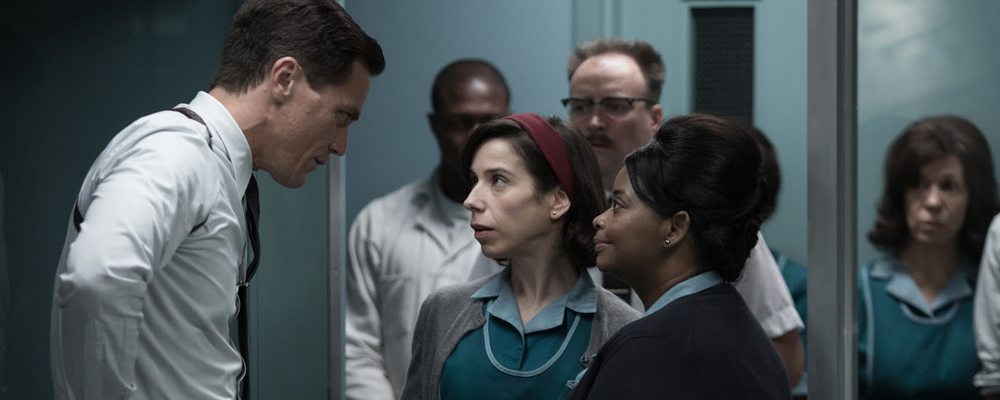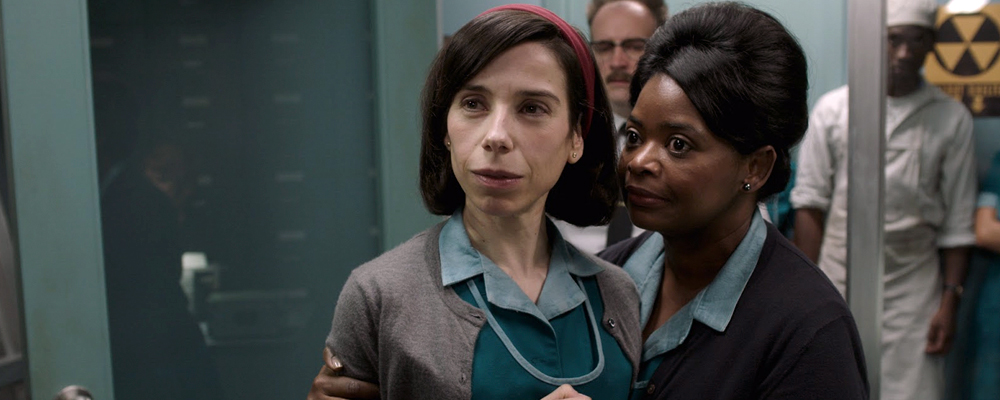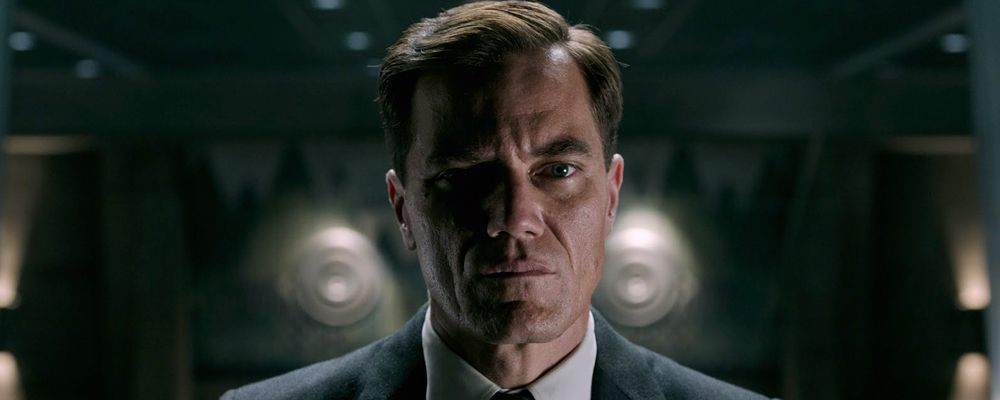Guillermo del Toro, Michael Shannon and Octavia Spencer Discuss ‘The Shape of Water’ and Creating a World of Others
Sandra Miska
For his latest feature “The Shape of Water,” which is being hailed as his best film since “Pan’s Labyrinth,” writer-director Guillermo del Toro has chosen to tell the unlikely love story between a Elisa (Sally Hawkins), a mute cleaning lady at a government facility, and a captive amphibian man (Doug Jones). Set during the height of the Cold War, the film examines some of the issues that are still plaguing society today. “It’s a love letter to the idea that understanding is necessary right now, because understanding is love, and love is understanding,” explained del Toro when he, Shannon and Spencer recently sat down with Entertainment Voice.
“Right now we live in a time where words are not trustworthy,” the filmmaker elaborated. “[People] can lie a lot, especially in love, and I thought, ‘Let’s make the two characters silent,’ so they can be completely sincere with each other.’ I think the beauty of understanding and acceptance is you take people exactly as they are and you don’t have to discuss it. [Looking and touching] is the most sincere form of communication.”
Michael Shannon, who plays the film’s main antagonist, Colonel Robert Strickland, echoed del Toro’s sentiment about “The Shape of Water” being the kind of film that is much needed in today’s world.
“A real issue that I’m having personally right now, if you want to know, is holding on to some sense of hope,” revealed the actor. “Day after day, I look at the front of the newspaper and I think, ‘How much worse can it get?’ It’s just an endless barrage of kind of the worst humanity is capable of. So, to have a movie like this, this is, ‘Well, you know, people aren’t all bad. Sometimes really beautiful things happen, and there’s this thing called love, and it might actually be real.’”
Del Toro, who himself led a somewhat isolated existence as a child, spoke about how he found inspiration from the fairy tales of centuries past for this relatively modern story, which he describes as a fairy tale for others.
“The screenplay read ‘The Shape of Water: A Fairy Tale for Troubled Times,’ and the reason I did that was because fairy tales were originally meant for troubled times. And they were told for adults by traveling people. In the original inception of the fairy tales, there were mostly cobblers, tailors and soldiers that would go from one town to another telling these stories. That’s why most of the stories are about cobblers or tailors, or soldiers. They would say, ‘If you give me a good meal and a place to sleep, I will tell you a story.’ [The whole household] would sit around and the guy would tell a story, and the next year if he didn’t tell a good story, they wouldn’t open the door… Most of them were chronicles of difficulties. If you read the stories, there’s pestilence, famine, war.” He points to the story of Hansel and Gretel, who were abandoned by their parents in the woods and left to die during an extreme famine, as an example of another fairy tale for troubled times.
Octavia Spencer plays Zelda, the best friend, co-workers and partner in crime of Elisa’s, who herself is facing difficulties in her own life due to her being undervalued both at work and at home. The Oscar-winning actress spoke about why the 1962 setting was crucial to the story, and how the creative choices made by del Toro endeared him and the screenplay to her.
“That’s one of the things that I loved about the movie, that it’s set in a time period where black people were disenfranchised, and the LGBTQ community has been disenfranchised up until five to eight years ago. So, the fact that he has two main characters who can’t talk, and he chooses a black woman and a closeted gay man to be their voices, says a lot about who Guillermo is. He wanted disenfranchised people to be represented, to be heard. We’re working at NASA, and usually it is the scientists who are the center of things, but in his story, he has the cleaning crew, the invisible people, be the ones who get the screen time.”
Del Toro explained why making Elisa and her band of outsiders the heros of the story, as opposed to the handsome, arrogant agent, was important. “In the original movie, Strickland would be the hero. He would rescue the girl, shoot the creature. The creature would be an image of horror. But what was interesting and a political decision, is the same building, if you go through the front door with the agents and the scientists and you tell the story as usual, that’s a political choice. But if you go through the service door, the people who have no voice, the people who clean the toilets… that’s a different story. You can tell the same story through the two different entrances, and it’s completely different.”
Strickland may have been the villain of this fairy tale, but he is hardly a one-dimensional monster. Shannon and the rest of the main cast were aided greatly by detailed character bios given to them by del Toro before the start of production. He explained how knowing Strickland’s backstory helped him in finding the character’s humanity.
“Guillermo insinuated that at one point in time, Strickland may have been in a situation when he was younger where he was taken advantage of, and by and large, that tends to have an effect on people, mainly that they tend to return the favor someday. It’s kind of the cycle of the human dilemma,” revealed Shannon. “I don’t think Strickland’s some freak. He wasn’t that hard for me to understand, really. People who get put in authority positions, it’s honestly hard to resist the temptation to abuse it, as we’re seeing nowadays. It’s not like I was doing some experimental theater work or something; I was basically just documenting what is an epidemic right now.”
Shannon, Spencer and their castmates knew everything about the lives of their characters before the story, but what about afterwards? Spencer explained how Zelda’s journey with Elisa helped her find her own inner strength and self worth.
“When Elisa falls in love, Zelda regains some of her youth,” she explained. “You always saw her with the bouffant, and at one point she starts wearing her hair down again. She starts seeing the value in herself. It’s subtle. I thinks she leaves [her unappreciative husband]. She has had enough.”
“The Shape of Water” opens Dec. 1 in New York, Dec. 8 in select theaters, Dec. 22 nationwide.




